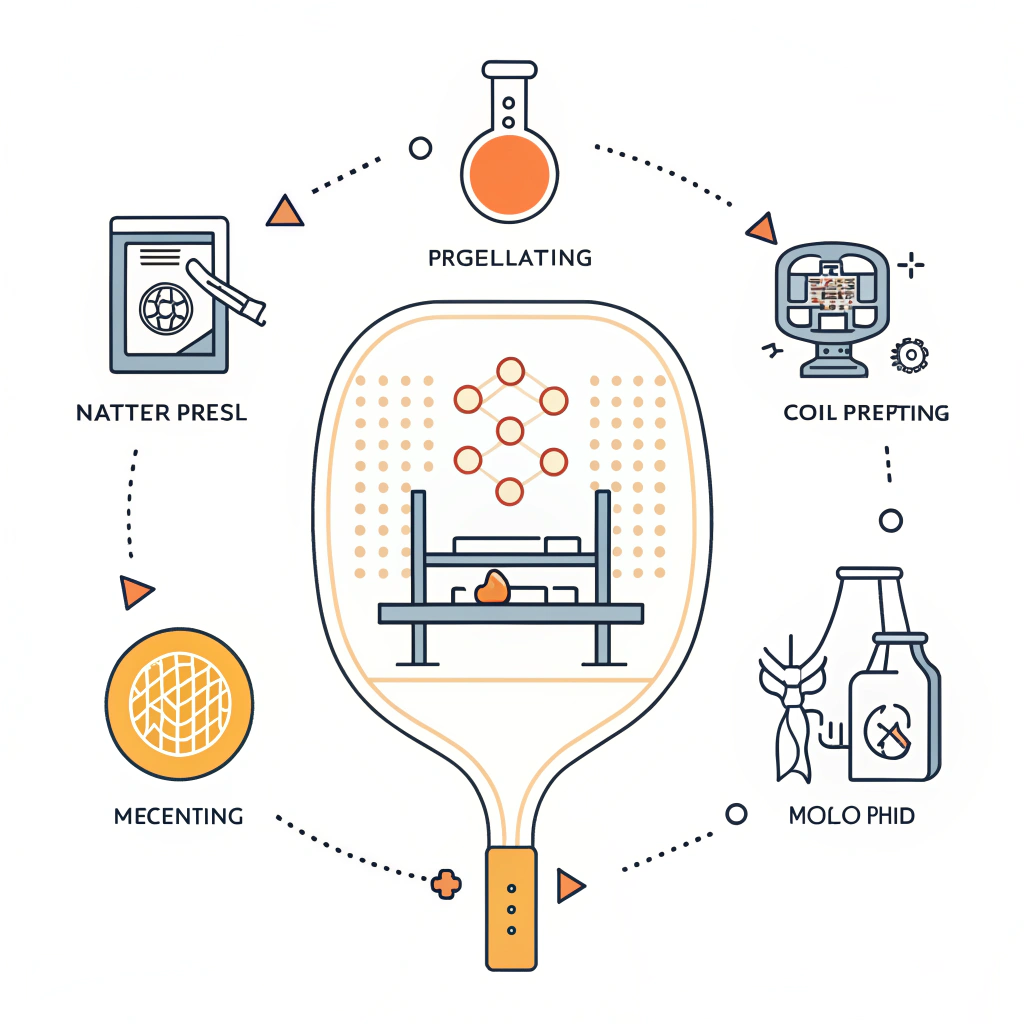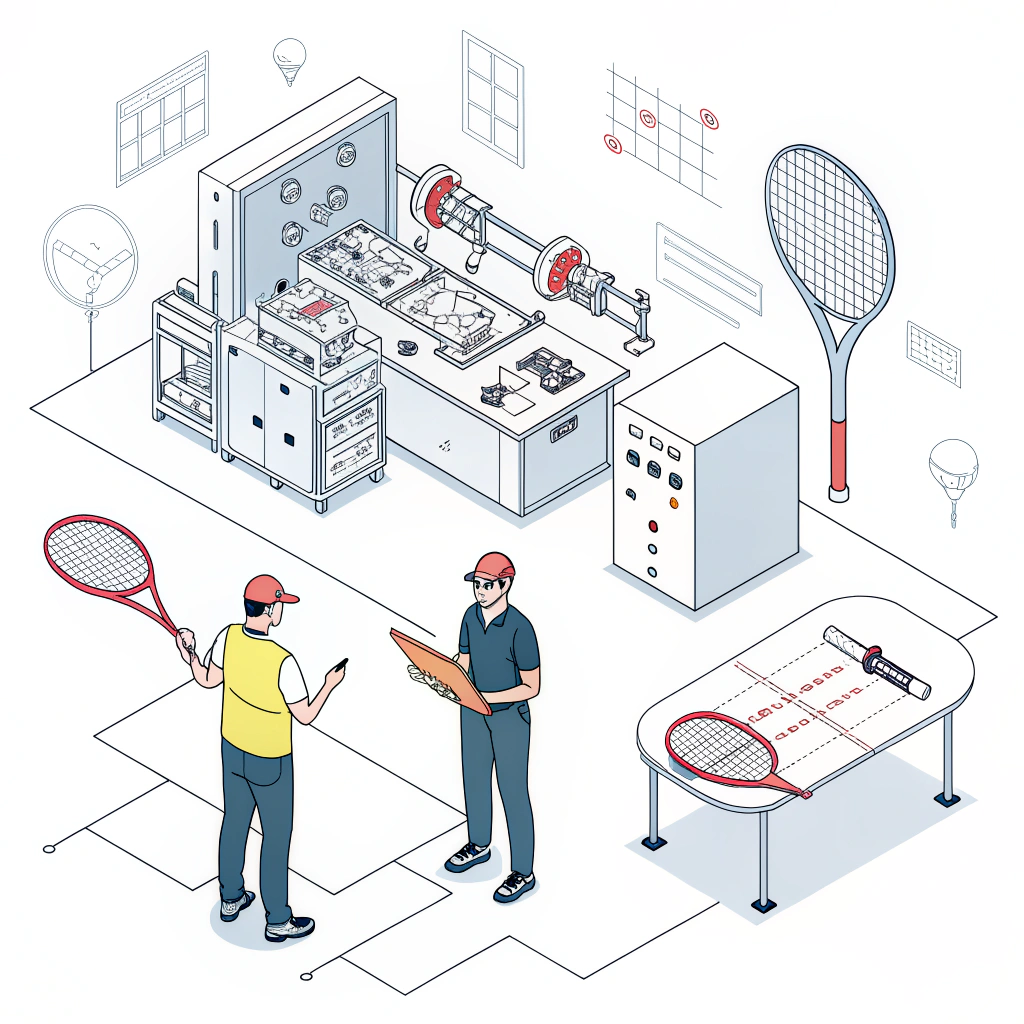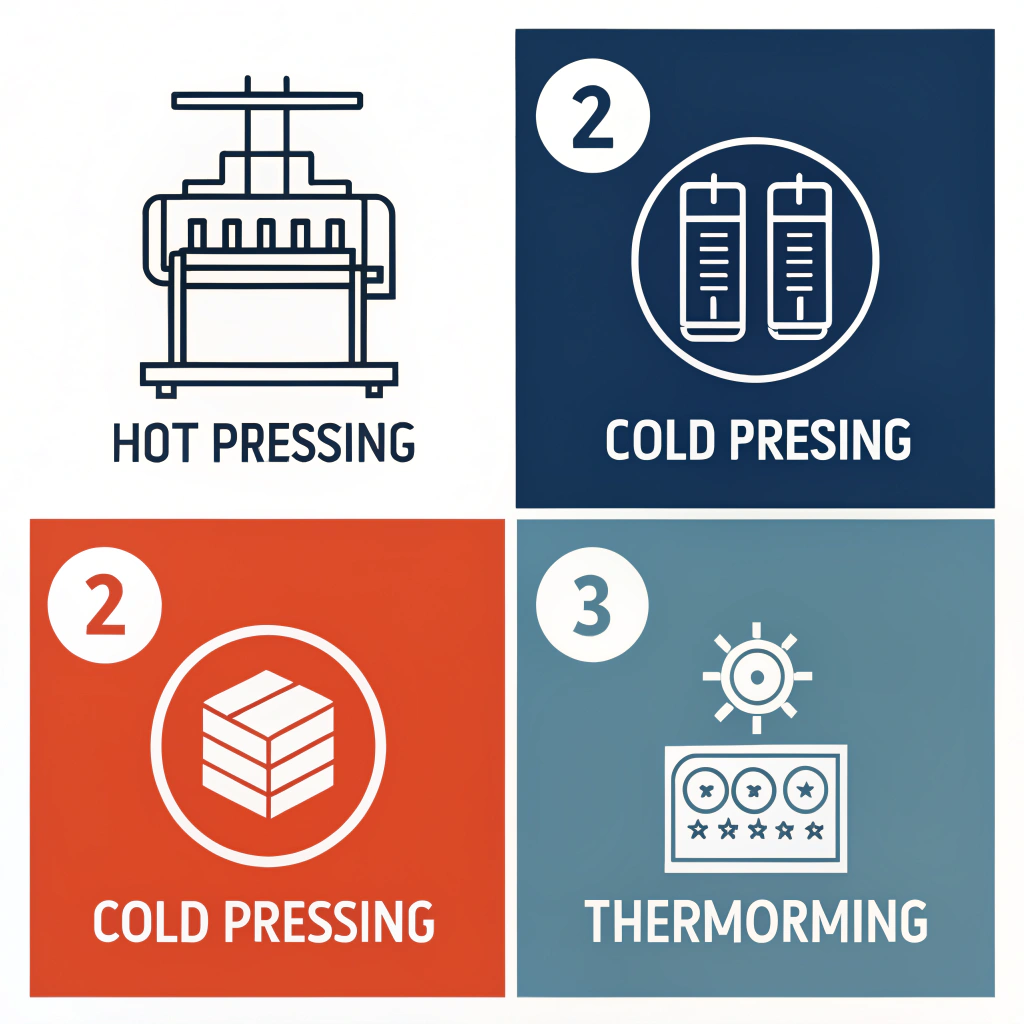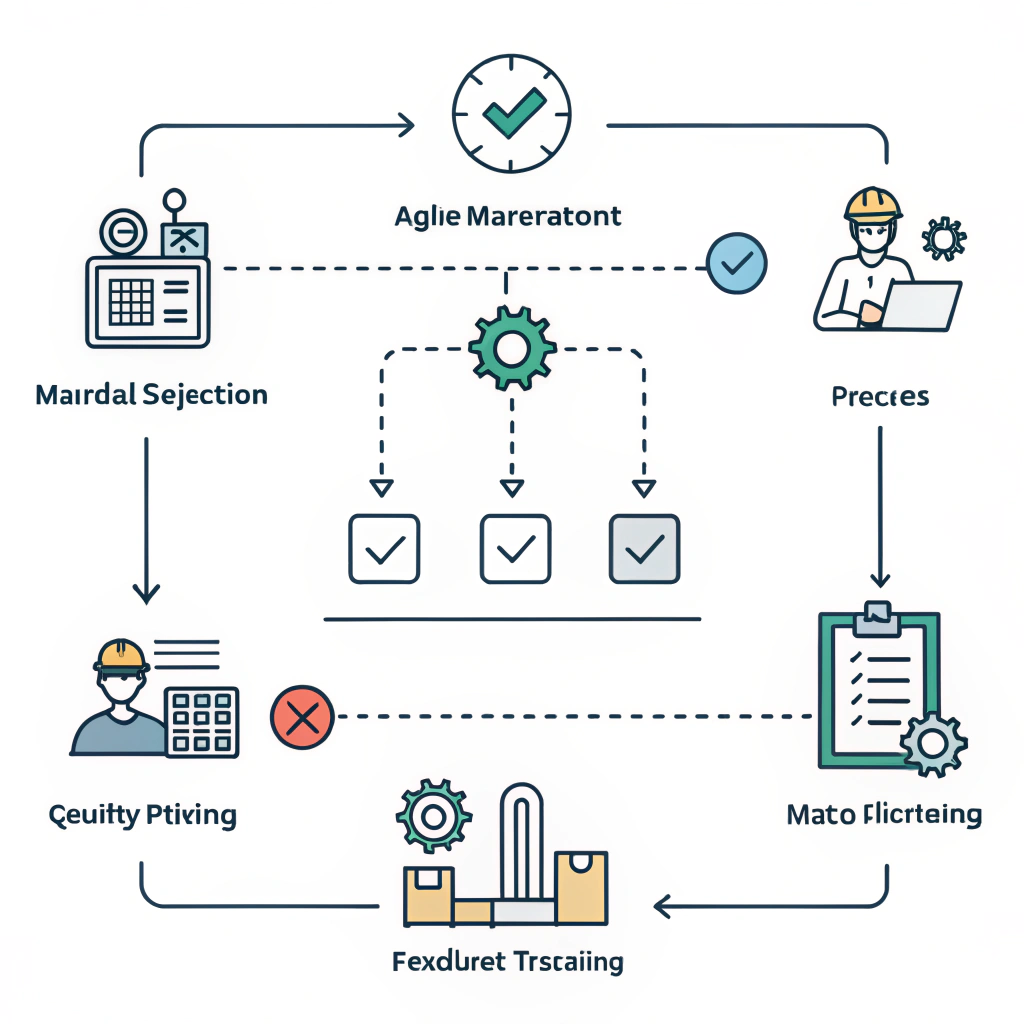Fast production of high-performance pickleball paddles is achieved by carefully selecting the optimal manufacturing process to balance speed, material performance, and quality. In this article, we break down the challenges in rapid prototyping1, analyze key production methods, and provide a step-by-step guide for product development managers and R&D engineers to choose the best process for agile, efficient paddle manufacturing.
For companies in the sports equipment industry, particularly those specializing in high-performance pickleball paddles, rapid prototyping is crucial. When deadlines are tight and market demand evolves quickly, manufacturing partners must deliver prototypes that are not only fast to produce but also meet stringent performance criteria. The challenge lies in selecting a production process that assures quality and durability, whether you use hot pressing2, cold pressing3, or thermoforming4. Each technique offers unique benefits and comes with certain trade-offs.
For product development managers and R&D engineers, understanding the strengths and limitations of each production method is essential. The primary challenge is aligning the manufacturing process with the specific demands of paddle speed, performance, and customization. Key concerns include:
• Turnaround Time: Rapid prototyping demands processes that minimize production cycles while still maintaining quality.
• Material Performance: Paddle materials such as various types of carbon fiber, fiberglass, or composite materials have different responses to manufacturing pressures and temperatures.
• Cost Efficiency: Balancing advanced production techniques with budget constraints to ensure market competitiveness.
• Design Complexity: Navigating intricate paddle designs and custom options without compromising structural integrity.
By grasping these challenges, companies can better evaluate which production method offers the ideal mix of efficiency and performance, ensuring that prototypes not only look good on paper but also meet the dynamic requirements of high-level play.
Hot pressing is a widely used manufacturing technique in which materials are heated and then pressed into shape. For high-performance pickleball paddles, using hot pressing can yield components with outstanding impact resistance and durability. This method is highly efficient—ideal for large-scale manufacturing—though it may slightly alter the intrinsic feel of the paddle.
Advantages:
• High production efficiency, ideal for rapid scaling
• Generates strong and durable paddles
• Ensures excellent impact resistance
Disadvantages:
• Some alteration of material properties
• Requires high initial equipment investment
In contrast, cold pressing forms materials at room temperature under controlled mechanical pressure. This process is best for products requiring precise control over thickness, ensuring a more consistent paddle feel which is essential for fine ball control.
Advantages:
• Precise control over paddle structure
• Preserves the intrinsic properties of materials
• Improved ball feel and responsiveness
Disadvantages:
• Longer production cycles compared to hot pressing
• Demands highly precise pressure control equipment
Thermoforming involves heating the paddle material until soft, then molding it into the desired shape using custom-designed molds. This technique allows companies to create paddles with complex geometries and intricate designs while optimizing material distribution.
Advantages:
• Capability for intricate designs and precise material layout
• Helps maintain the paddle's stability and performance
• Ideal for premium or custom-made paddle lines
Disadvantages:
• Longer production times
• Higher equipment costs, making it best suited for premium production
A tabular comparison of these techniques can provide a clearer picture:
| Process | Key Advantages | Primary Disadvantages | Best Use Cases |
|---|---|---|---|
| Hot Pressing | High efficiency, strong impact resistance | Altered material feel, high equipment cost | High-volume, performance-oriented paddles |
| Cold Pressing | Precise control, maintains material properties | Longer cycles, requires exact pressure control | Designs needing superior ball feel and precise thickness |
| Thermoforming | Complex design capabilities, optimal material distribution | Longer production time, costlier setup | Premium custom-made paddles |
This comparison helps decision-makers weigh the benefits of each process against the specific needs of their rapid prototyping projects.
When production speed and quality are non-negotiable, pairing the right process with the right material is key. NEX Pickleball, as a leading manufacturer, leverages advanced techniques to deliver products that excel in performance and durability. By combining production methods with specialized materials such as 3K Carbon Fiber, 12K Carbon Fiber, T300 Carbon Fiber, and advanced composites, manufacturers can further fine-tune the final product’s performance based on its intended use and market segment.
• Carbon Fiber:
- 3K Carbon Fiber is used when flexibility and strength are paramount, ensuring high rebound and reduced vibration.
- 12K Carbon Fiber provides greater hardness and smoother surfaces, valuable for competitive play when extreme impact resistance is needed.
- T300 Carbon Fiber strikes a balance between strength and weight, making it optimal for paddles requiring dynamic control.
• Fiberglass:
- Offers a larger sweet spot with improved ball control, essential for players who prioritize precision and consistency over raw power.
• Composite Materials:
- By blending carbon fiber and fiberglass, manufacturers can achieve a harmonious balance between power and precision.
- Bamboo core composites ensure lightweight paddles with robust impact resistance.
- Honeycomb cores (Nomex, Aluminum, and Polymer) are essential for optimizing shock absorption and reducing vibration, contributing to the paddle’s overall performance.
Integrating these material characteristics with production processes enables a rapid prototyping system that not only meets strict production timelines but also aligns with the high-performance standards expected by competitive players.
Implementing agile manufacturing5 Strategies
Rapid prototyping is not simply a technical challenge—it’s a strategic initiative central to staying competitive in the fast-paced sports equipment market. Agile manufacturing strategies incorporate flexible production lines, optimized material selection, and rapid feedback loops to adjust designs quickly based on performance testing.
-
Define Technical Requirements
Identify key parameters such as weight, balance, grip size, and surface texture. Understand the performance benefits each process brings relative to these requirements. -
Process Selection and Experimentation
Test different manufacturing methods to determine which offers the best balance of speed and quality. For example, if the priority is precise ball control with a consistent hit feel, cold pressing might be the most appropriate process. -
Material and Process Pairing
Work closely with manufacturing partners to pair advanced materials with the ideal production process. Utilize data from performance tests to refine the pairing further. -
Quality and Durability Testing
Each prototype should undergo rigorous testing for strength, flexibility, and durability. For instance, evaluating the paddle’s vibration reduction, impact resistance, and overall player comfort before finalizing the production method. -
Feedback Loop and Iteration
Rapid prototyping thrives on iterative improvements. Use performance data and feedback from product testing to refine design elements and manufacturing processes, ensuring that each new prototype is superior to the last.
A flowchart or step-by-step diagram showcasing this agile process can be helpful for internal teams and clients alike.
| Step | Description | Expected Outcome |
|---|---|---|
| Define Technical Requirements | Identify key performance metrics such as weight, balance, and grip design | Clear design guidelines and production targets |
| Process Selection | Evaluate hot pressing, cold pressing, and thermoforming for their respective strengths | Optimal process choice based on design needs |
| Material and Process Pairing | Align material properties with production techniques (e.g., T300 Carbon Fiber with cold pressing) | Enhanced paddle performance and durability |
| Quality Testing | Conduct impact tests, vibration reduction tests, and control assessments | Assurance of product consistency and performance |
| Iterative Feedback | Collect feedback post-testing and refine prototypes accordingly | Continuous improvement and rapid market readiness |
By taking a systematic approach to agile manufacturing, companies can drastically reduce turnaround times while ensuring that every paddle meets the high standards required by competitive players and evolving market demands.
At NEX Pickleball, our manufacturing process is designed with efficiency, quality, and innovation at its core. We understand the rapid prototyping needs of product development managers and R&D engineers. Our state-of-the-art production techniques—ranging from hot pressing and cold pressing to thermoforming—offer a versatile platform to accommodate various design requirements and production timelines.
Our approach is also customer-centric. With options for custom paddle designs, precise adjustments in weight, balance, and grip sizes can be tailored to specific client needs. In addition, our combination of advanced materials and production methods allows us to test and iterate quickly, ensuring that every prototype meets rigorous standards before it hits the market.
By partnering with NEX Pickleball, companies benefit from:
• Fast turnaround production without compromising on performance and durability
• Access to cutting-edge production techniques that deliver superior product quality
• Flexible and customizable solutions that align with the unique specifications of each project
In a competitive market where timing and performance are everything, choosing the right manufacturing partner and production process becomes a strategic advantage.
To achieve rapid prototyping success in high-performance pickleball paddle manufacturing:
• Understand the unique challenges and requirements of your project.
• Evaluate the production methods—hot pressing, cold pressing, and thermoforming—based on their advantages, limitations, and alignment with your design goals.
• Pair the appropriate advanced materials with the chosen production process to optimize performance, durability, and responsiveness.
• Implement agile manufacturing strategies that emphasize iterative testing and continuous improvement.
• Partner with experienced manufacturers like NEX Pickleball, who not only provide high-quality production but also offer flexible customization options tailored to your market demands.
By employing these strategies, product development managers and R&D engineers can significantly reduce prototype turnaround times while ensuring the final product meets the highest standards of performance and durability. Your next step should be to evaluate your current production process and consider integrating these techniques to accelerate your next product development cycle.
• What production methods are best for rapid pickleball paddle prototyping?
Rapid prototyping in paddle manufacturing benefits from methods like hot pressing, cold pressing, and thermoforming. Each method offers distinct advantages depending on your need for speed, precision, or complex design capability, enabling manufacturers to quickly iterate while maintaining high product performance.
• How does hot pressing compare to cold pressing for paddle production?
Hot pressing is highly efficient and yields strong paddles with excellent impact resistance, making it ideal for high-volume production, while cold pressing offers precise control over paddle thickness and material properties, ensuring a superior ball feel but with longer production cycles.
• What are the advantages of thermoforming in paddle manufacturing?
Thermoforming allows for intricate designs and precise material distribution, thereby enhancing a paddle’s stability and performance. Although it requires longer production times and higher equipment investments, it is ideal for premium or custom-made paddles where performance and aesthetics are both critical.
-
rapid prototyping: Learn about the iterative process of quickly producing a model to test design assumptions and accelerate product development. ↩ ↩
-
hot pressing: Discover how heating materials and applying pressure creates durable components with impressive impact resistance. ↩ ↩
-
cold pressing: Understand the method of shaping materials at room temperature with controlled pressure to preserve intrinsic material properties. ↩ ↩
-
thermoforming: Explore the process of heating materials to a pliable state before molding them into complex, high-performance designs. ↩ ↩
-
agile manufacturing: Uncover strategies that emphasize flexible production lines, rapid feedback, and iterative improvement to maintain competitiveness in product development. ↩ ↩







